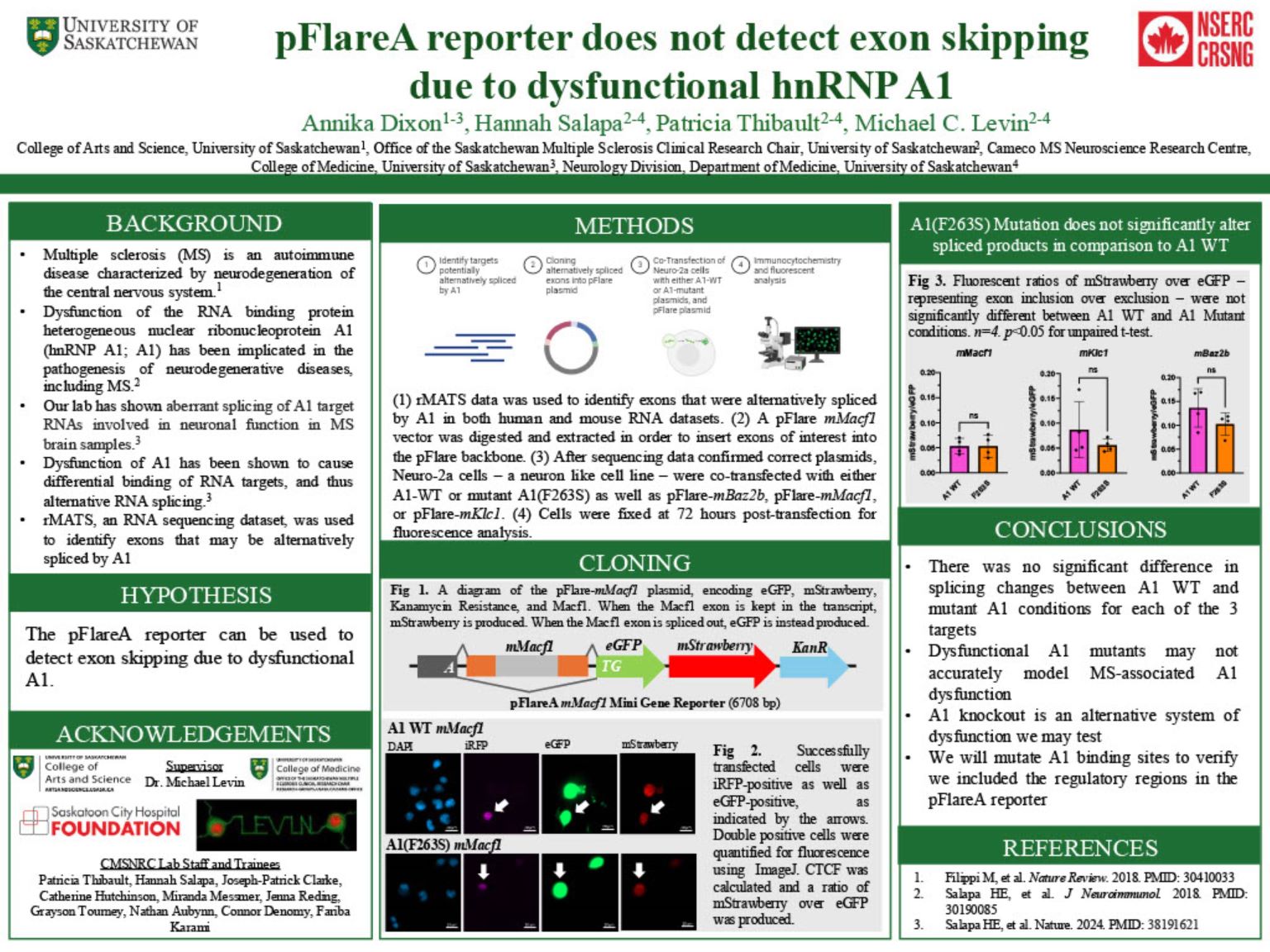
pFlareA reporter does not detect exon skipping due to dysfunctional hnRNP A1
Annika Dixon
Heterogeneous nuclear ribonucleoprotein A1 (A1), a protein that modulates RNA splicing, is dysfunctional in multiple sclerosis (MS) neurons. Our lab has shown that alternative splicing (AS) changes mediated by dysfunctional A1 mechanistically contribute to the pathogenesis of MS. To test whether exons in transcripts of interest (EOIs; from Macf1, Klc1, Baz2b) identified by RNAseq are alternatively spliced, EOIs and their flanking regulatory regions were cloned into a pFlare reporter plasmid, where red fluorescence indicates EOI retention and green fluorescence indicates EOI skipping. Neuro2a cells co-transfected with each pFlare plasmid and either wild-type A1 or a dysfunctional mutant A1 did not reveal a significant difference in AS in any of the targets of interest, suggesting that either dysfunctional mutants do not fully model MS-associated A1 dysfunction, or the EOI and flanking regions in pFlare did not encompass regions regulated by A1. Thus, we will next (1) validate the AS events using a PCR-based assay, (2) test our pFlares in a loss-of-function model of A1 dysfunction, and (3) mutate the putative A1 binding sites in the pFlare plasmids. Together these will validate both the observed events and the pFlare experimental system for future studies exploring AS, A1 dysfunction, and MS.
